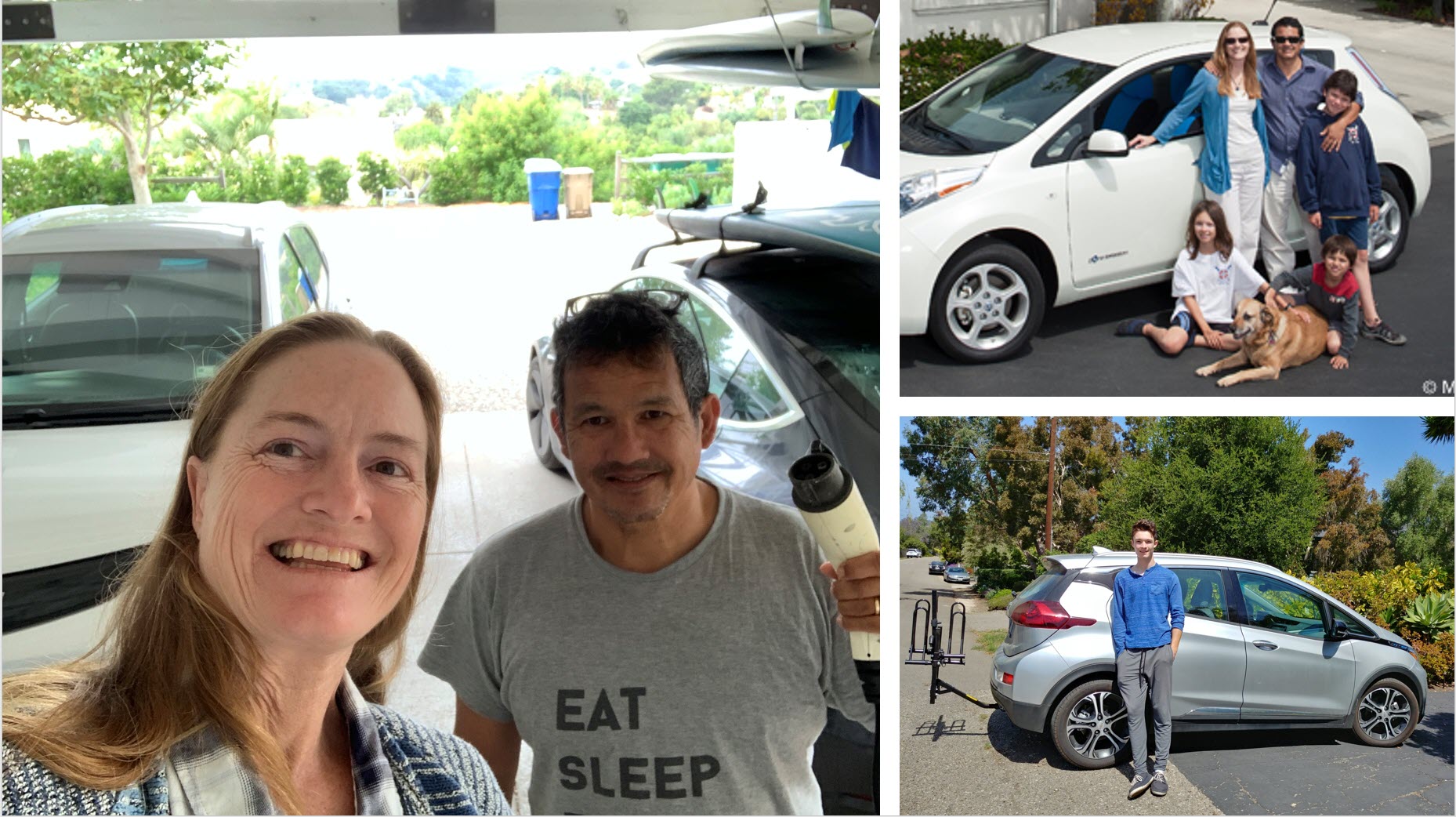By Katie Davis
The future is here. Around a quarter of all new cars sold in California are now electric. In some counties 40% of new cars are EVs. That’s an exponential increase up from 5-10% just a few years ago. There are many benefits to driving electric:
- Kick the addiction to oil and help solve the climate crisis: An EV can be powered by renewable energy.
- It's healthier and more fun: EVs are quiet, fume-free, and accelerate quickly.
- No more gas stations: Electricity is much cheaper than gasoline, and charging at home or work is more convenient.
- Lower maintenance costs: There's no oil to change and fewer repairs are needed.
- More options: Used electric cars are now available, and new ones have longer ranges, with more public charging infrastructure, which opens up long-distance travel.
- Carpool lane access: Clean cars can apply for an HOV decal for anytime access to the carpool lane.
New cars: There are now over 130 different EV options, whether your price range is $20,000 or $200,000. PG&E has a nice list showing costs and ranges for vehicles. Their site ev.pge.com also lets you compare vehicles and see what incentives you may be eligible for. You can track the latest news on electric cars at Green Car Reports. Review sites are increasingly covering EVs as well, such as Edmunds, US News, Motor Trend, and Car and Driver
Leased cars: Higher recent interest rates mean higher lease prices, but leasing is still a good option given the continuous improvement in EVs. This site lists specific lease offers at dealerships, with many in the $200-$400 a month range. Rebates could help cover the upfront costs.
Used cars: Search on AutoTrader and select used cars and fuel type “electric.” As an example, a used Nissan Leaf, Fiat 500 e, VW Golf, Chevy Bolt, Kia Soul EV can all be found for $5000 - $14,000. Older, cheaper EVs have more limited ranges, but are perfect for around-town driving. Or, buying used is a way to get a longer-range, high-end EV at a discount. There are now rebates available for used EVs as well.
Rebates & Incentives: The driveclean.ca.gov site has a great incentive search tool. Here are some specific programs:
- The Federal Government offers tax credits up to $7500 for new EVs and $4000 for used EVs, but with increasing requirements that they be manufactured in the U.S. or a free trade partner. That means some cars that qualify in 2023 might not in 2024. On the plus side, in 2024 that $7,500 tax incentive will be offered right away via the dealership as opposed to months later when filing taxes.
- California has been offering generous rebates, though in 2024, they plan to provide subsidies only to low-to-middle-income residents. See cleanvehiclerebate.org to see what's available.
- Central Coast Community Energy: (3cenergy.org) Counties of Santa Barbara, San Luis Obispo, Monterey, San Benito and Santa Cruz and cities including Goleta, Carpinteria, Santa Maria and other customers (See full list here) can get $1000-$4000 rebates on new or used EVs, plus up to $700 for a EV charger and up to $4000 for EV Readiness intended to reimburse the majority of costs associated with the cost for materials and labor for electrical work associated with Level 2 EV Charger installation at home or work. See Programs.
- Utilities: SCE is offering $1000-$4000 for a used EV, as does PG&E. PG&E also offering free home chargers.
- City of Santa Barbara: Customers of SB Clean Energy (sbcleanenergy.com) can get discounts on home solar and batteries to power your EV as well as a 20% discount on electric bike share membership. See Programs.
Home Charging: If you can park near an outlet, you can plug in and charge an EV, though a 110 volt outlet is pretty slow. It’s faster if you install a home charging station, which is called "level 2" (240 volt). They cost $200-$600 plus an electrician’s time, but you can get free or discounted charging installation through the utilities mentioned above or some car manufacturers. There is also a $1000 federal "Alternative Fuel" tax credit for buying qualified residential fueling equipment.
Public Charging: Download the plugshare app on your phone to find places to charge when you’re on the road, and plan your trip. PG&E also has a nice route planner that shows you charging stations along your route. You can also check out Electrify America, ChargePoint, Blink, and EVgo, which are some of the most common charging networks. Note that Teslas have their own network, and your Tesla will point you to them. You can find public level 2 charging that works for any EV or fast charging, which allows you to quickly refuel on the road. There are three different connectors for fast chargers:
- CHAdeMO fast charge connector used by Nissan which is being phased out.
- CCS/SAE which is used by most other EVs, aside from Tesla.
- NACS which is the Tesla connector. Tesla has the best charging infrastructure and is opening up to other cars. Some other manufacturers are adopting NACS.
Electric Vehicles 101: The Community Environmental Council offers local EV webinars, resources and Q&A.
Money for retiring your old car: If your old car is pre-1997, the Santa Barbara APCD or Ventura APCD will give you $1000 for it. Or, if your old car fails a smog check and needs to be retired, California's "Consumer Assistance Program Vehicle Retirement program" will give you $1000-$1500 to retire it.
Or, if you want to donate your old, used car to benefit the Sierra Club, you can do so here.

Growing up with EVs